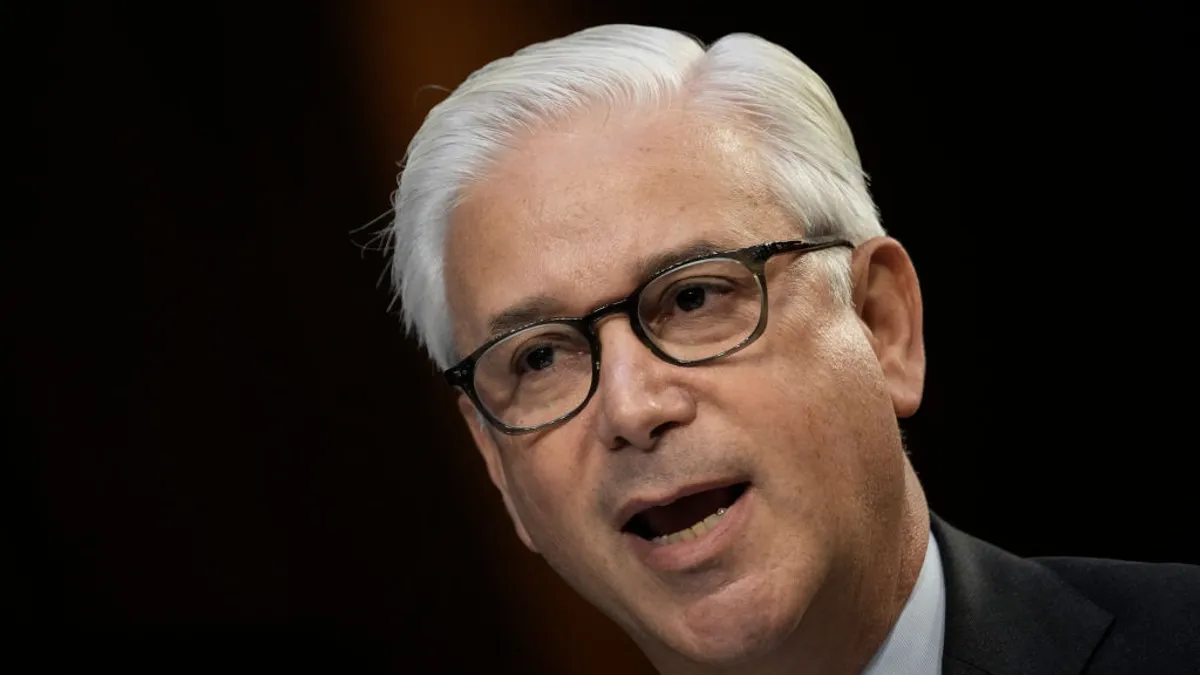Dive Brief:
- Banks are grappling with data overload and technical debt on the road to digital transformation, according to Publicis Sapient’s third Global Banking Benchmark study. The technology consulting firm surveyed 1,000 senior banking executives between Feb. 19 and April 14.
- Despite eagerness to scale artificial intelligence capabilities, nearly one-third of respondents cited budget constraints as a barrier to modernization. Banks have also been held back by legacy tech, regulatory challenges and a lack of operational agility in the past year, the report found.
- “Whether the focus is on traditional AI or generative AI, banks’ success stories have one thing in common: the right data,” the report’s authors said. “The challenge for banks isn’t a lack of customer data — they have plenty of it. The challenge is that banks’ data is typically siloed across lines of business.”
Dive Insight:
Digital transformation in banking boils down to a data problem. The quest for scalable generative AI business solutions underscores the challenges as banks struggle to harness mountains of business and customer data.
“Over the last couple of years, we’ve seen a proliferation of data,” said David Donovan, executive vice president and head of financial services for North America at Publicis Sapient. “It doesn't just come in spreadsheets and numbers; it comes in tweets, pictures, videos and chats. All those inputs need to be fed into an architecture that can consume it.”
Unstructured data has the potential to change the industry over the next decade, Michael Abbott, Accenture’s senior managing director and global banking lead said during a CIO Dive virtual event in March.
While organizations are modernizing to reach AI goals, leaders are also using the technology to ease the process. Generative AI coding tools trained to modernize mainframe COBOL applications can help banks wipe away technical debt, Abbott said.
AI and the data that powers it are the most critical areas for modernization in banking over the next three years, according to Publicis Sapient. But transformation reaches deep into the core of the enterprise and across its many business units.
A traditional investment bank has an average of 75,000 individual databases, Donovan said. “A lot of those databases have duplicate data, inefficient taxonomies and, for lack of a better term, fragmentation,” he said.
Pulling data assets together onto a unified platform requires major investments in cloud and other technologies.
JPMorgan Chase, for example, expects to pour $17 billion into technology this year, a 10% increase from $15.5 billion in 2023. As part of its AI strategy, the bank rolled out its LLM Suite AI assistant to 140,000 employees last month.
“Banks have more information on their clients than anyone,” Donovan said. “They know how much you make, they know your mortgage, they know your car payment, they map out your credit cards — they can pretty much figure out where you are on a day-to-day basis if they wanted to.”
While an unsettled regulatory environment around AI data usage has put the brakes on some plans, banking executives are directing 29% of their digital customer experience investments, on average, into machine learning and AI, according to Publicis Sapient.
Banks are also laying the groundwork for scaling AI in the cloud, the report found. Nearly two in five respondents said their company had prioritized cloud infrastructure investments over the next three years.
“The legacy technology is at its limit,” Donovan said. “It's not going to be able to absorb the amount of information that these enterprises are going to need to access to be competitive.”















